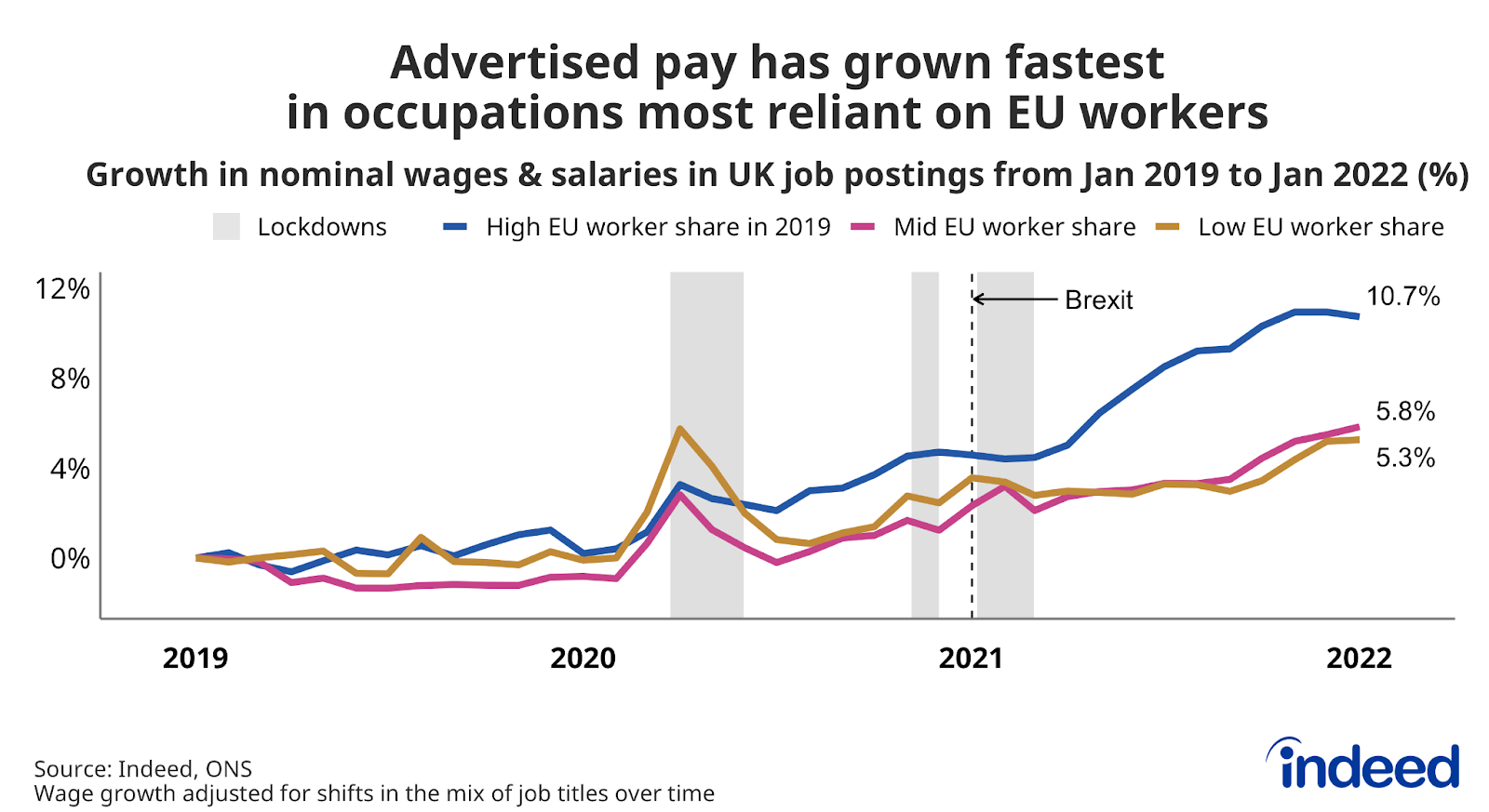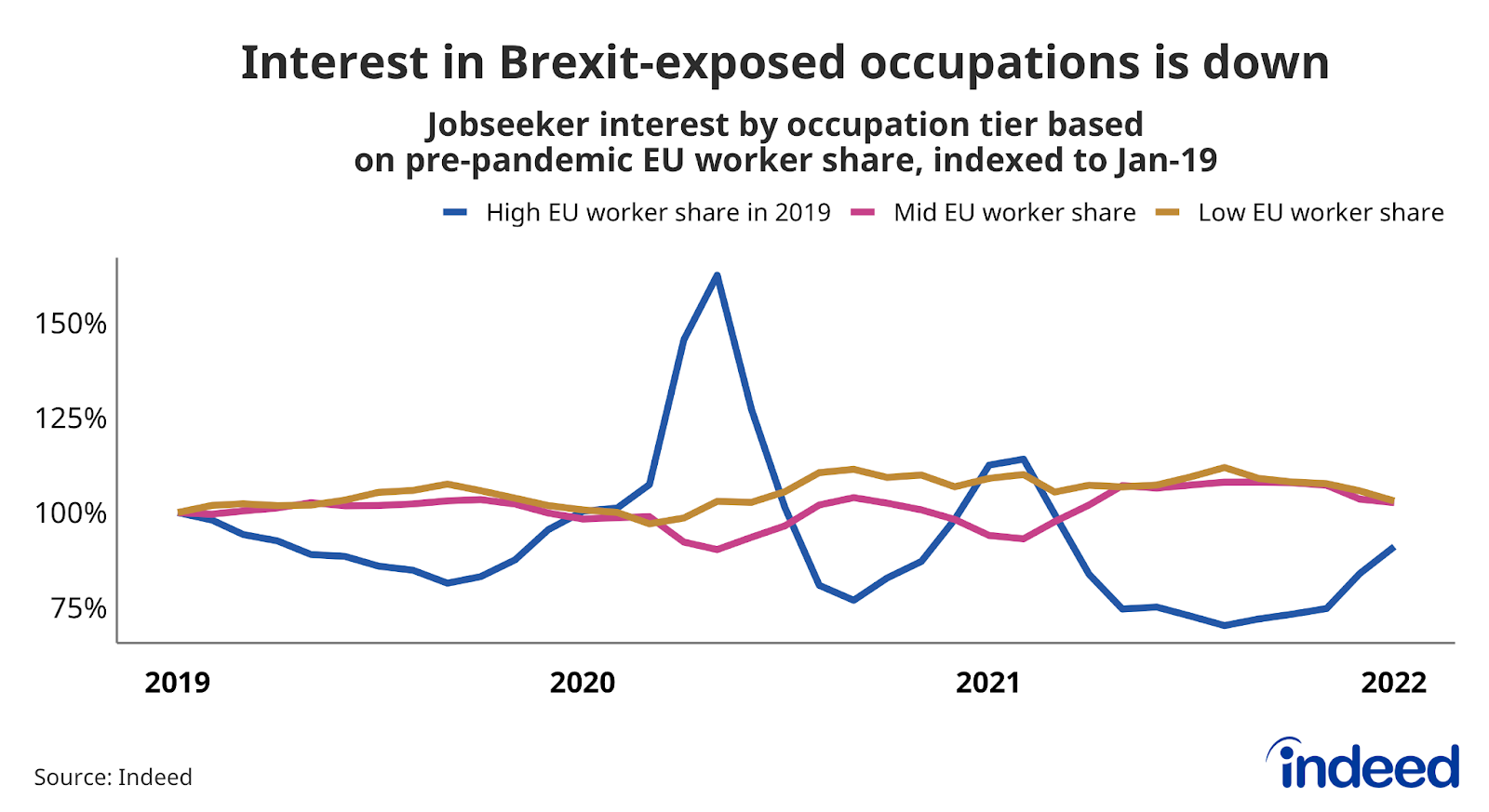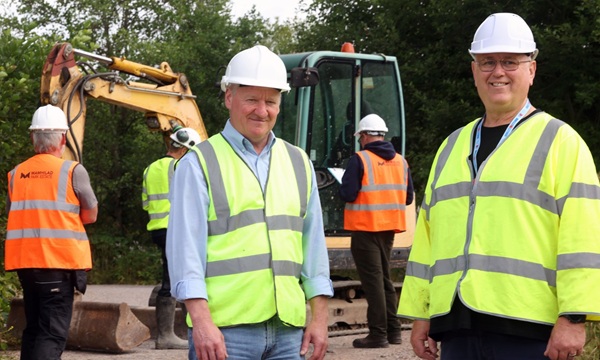Jobs that once relied heavily on EU workers have seen advertised wages soar 11% in two years, as jobseeker interest has failed to keep pace with employers’ demand for staff in the sectors most exposed to Brexit, according to analysis by the world’s largest job site, Indeed.
Indeed compared the rate of advertised salary growth in occupations which, before the pandemic, had a workforce in which more than one worker in 10 was an EU national, with occupations with 5-10% EU nationals and those with fewer than 5%.
It found that while wages soared by 11% between 2019 and 2021 in occupations in which more than one worker in 10 was from the EU – including construction, cleaning, driving, hospitality and leisure – pay grew by just 5% in jobs in which EU citizens accounted for fewer than one in 20 employees.
The gap in pay growth widened as lockdown restrictions eased last spring, with jobseeker interest in some sectors failing to keep up with businesses’ demand for recruits, post-Brexit immigration rules made it harder for employers to plug gaps with foreign workers.
Substantial numbers of EU nationals left the UK during 2020, with Office for National Statistics data suggesting the number of EU citizens living in the country fell to 3.41 million in the year to June 2021, down from 3.59 million in the year to June 2020 and 3.73 million in the 12 months prior to that.
Growth in advertised wages in jobs with the highest – and lowest – share of EU workers since 2019
Many of the occupations that had the heaviest reliance on EU nationals are relatively low-paid, with average salaries falling below the £25,600 general salary threshold for a visa.
This means employers in these sectors will struggle to obtain permits for foreign workers unless they substantially raise pay, or the UK Government adds more roles to the shortage occupations list for which visa rules are relaxed.
The exceptionally high rates of wage growth being seen in Brexit-exposed jobs are likely to be the product of a double-whammy of rising demand for workers colliding with declining levels of jobseeker interest.
After lockdown eased last spring, job postings grew fastest in the sectors most reliant on EU workers, such as distribution, manufacturing, construction and hospitality, where there was often fierce competition for staff.
Meanwhile, the supply of candidates failed to keep pace, leading to widespread reports of labour shortages. Since last spring’s reopening, job postings in the roles with the highest proportion of EU nationals pre-pandemic have received fewer clicks from jobseekers than previously, relative to the average job on Indeed.
Jobseeker interest in postings is lowest in sectors with the highest share of EU nationals pre-pandemic

Jack Kennedy, UK Economist at global job site Indeed, said:
Major shifts imposed on the labour market by the pandemic, coupled with the legacy of Brexit, have coalesced into a perfect storm for the occupations previously most reliant on EU workers.
“Although the easing of international travel may entice more foreign workers to seek work in the UK, many Brexit-exposed occupations will not meet the Skilled Worker visa criteria, meaning employers in those sectors will continue to struggle to recruit from abroad.
“With the UK labour market already tighter than it has been for decades, importing workers from the EU is no longer the safety valve for businesses that it was before Brexit. Employers now have little option but to hike pay to try to entice workers, but whether this will be sufficient to bring in enough people remains to be seen.
“If this is not successful, employers are likely to redouble their efforts to persuade the Government to make the immigration rules more flexible.”







